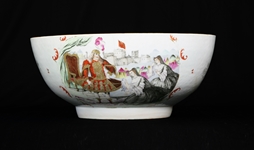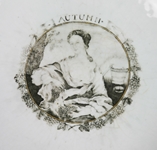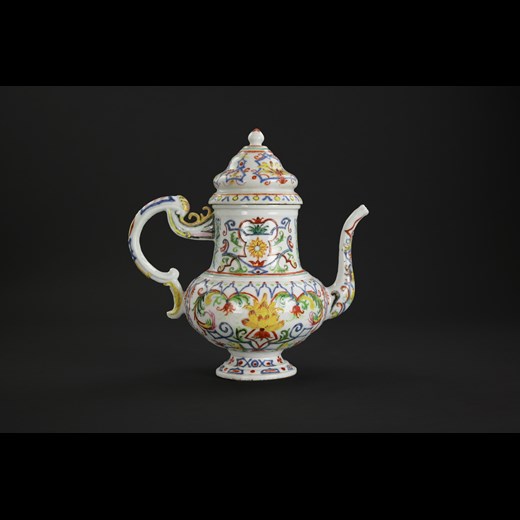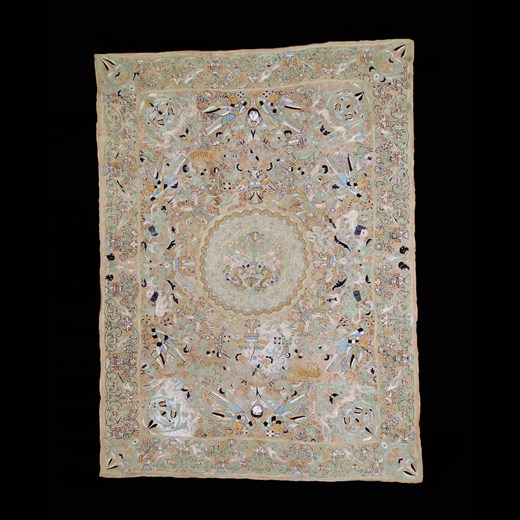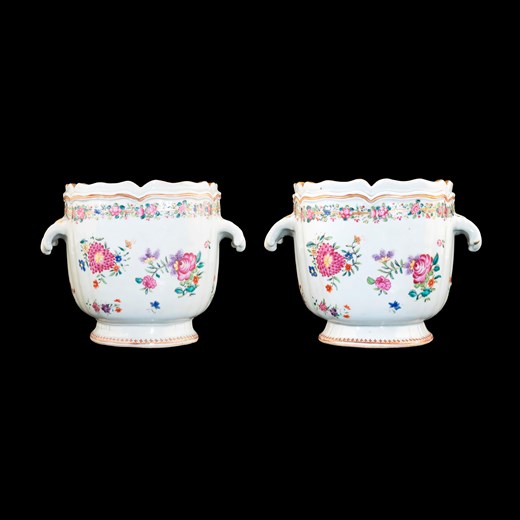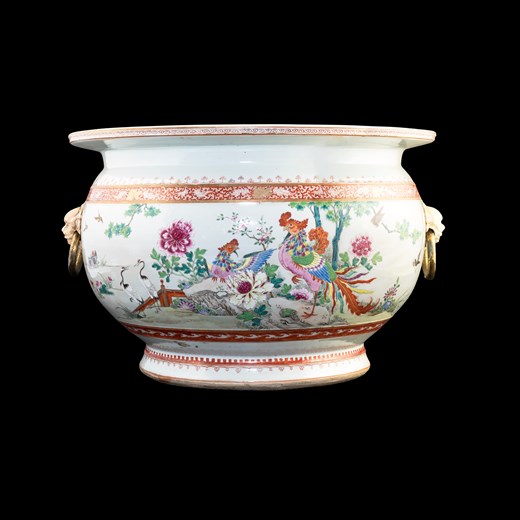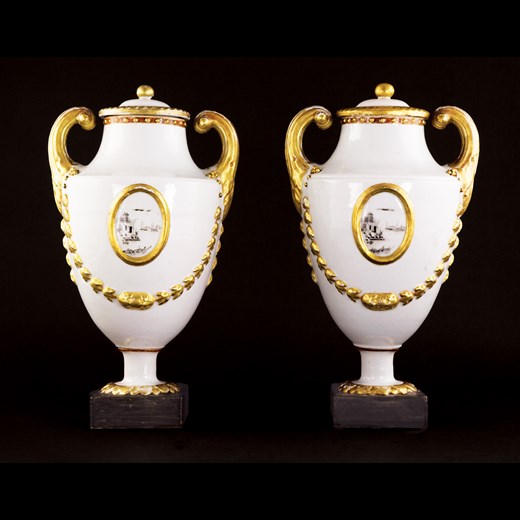What are you looking for?
searchChinese export porcelain Punchbowl with James Quin as Coriolanus
Chinese export porcelain Punchbowl with James Quin as Coriolanus
Qianlong period circa 1755-65Qianlong period circa 1755-65
European Market
Diameter: 15½ inches; 39cm
An extremely rare and previously unrecorded famille rose punch bowl with a scene of European figures before a castle, the interior with a grisaille roundel depicting ‘Autumn’. The scene is after a 1749 print “Mr Quin as Coriolanus” published by C Bowles.
This remarkable bowl is unrecorded. The scene, depicted twice, initially presented something of a mystery. It appears to show a heroic figure standing in front of a throne on a dais and receiving two women who kneel in supplication before him, holding handkerchiefs and in a state of grief. He is very finely dressed and carrying a sceptre, whereas the women are dressed as grieving widows. The style of costume is seventeenth century.
After extensive research the image has been located as a theatrical print of James Quin as Coriolanus on the the stage at Covent Garden in 1749. It is known in two versions, one published by Carrington Bowles (examples in the British Musem and Victoria and Albert Museum) - and another by B Dickinson with attached verses in appreciation of the actress Peg Woffington, which begin ‘Delightful Woffington! so formed to please’ (an example in the Queen’s Collection, Buckingham Palace) - this is probably the first version. James Quin was the foremost actor of his day and dominated the London stage in the second quarter of the 18th century. His famous declamatory style was well suited to the fashion for very stylised depictions of classical heroes. This fashion also extended to a particular costume structure for heroes, evolved from 17th century ballet, with a very wide skirt and high plumed hat, all based upon a Renaissance understanding of Roman armour.
Quin was a large and well built figure who was best known for playing Falstaff in Shakespeare. His style was coming under threat from the more naturalistic acting of the younger David Garrick by the end of the 1740s and eventually fell out of fashion. There was great rivalry between the two, but also a friendship that lasted - and Garrick wrote the epitaph on Quin’s memorial in Bath.
One of Quin’s lifelong friends was the Scottish poet James Thomson (1700-1748) who wrote a series of long poems The Seasons as well as many plays, though he is most famous now for having written the words for Rule Brittania. Quin had rescued Thomson from debtors’ prison and joined him in many debauched drinking sessions - and they lived together for a time in Richmond.
In 1746 Thomson completed his version of Coriolanus, which differs significantly from Shakespeare and is based on Livy’s account of the Roman general who threatened revolt against Rome but was persuaded to turn back from the gates of Rome by the tearful pleas of his wife and mother - Shakespeare’s play covers more action and uses Plutarch as the main source. Thomson was using this theme to reflect the recent Jacobite uprising. The play was due to be performed, with Quin in the title role and Garrick as Tullus (Aufidius) but Garrick eventually withdrew and the production was shelved until Thomson died in 1748 leaving significant debts and two destitute sisters in Scotland.
Thomson’s main patron, the Whig politician George Lyttelton (1709-1773) then staged a production of Coriolanus at Covent Garden as a benefit for Thomson’s heirs, with Lyttelton writing a prologue so powerful that Quin is reported to have burst into tears when reciting it. Peg Woffington and Mrs Bellamy played the two women, Volumnia and Veturia. The play ran for a week to full houses and was quite an event and this print is one of several known of the production, though the artist is not recorded and the date is approximate. Another different image of this scene is known from a 1762 edition of Thomson’s work.
It is possible that the bowl was ordered by George Lyttelton in memory of his friend Thomson. Lyttelton was very wealthy and built Hagley Hall in Worcestershire in the 1760s. He was secretary to Frederick, Prince of Wales in 1737, made a baronet in 1751 and Baron in 1756. He was a strong opponent of Walpole and after his fall became Chancellor of the Exchequer in 1756. He married twice, firstly Lucy Fortescue (d1747) and then Elizabeth Rich, daughter of Sir Robert Rich, 4th Bt. Both the Fortescue and the Rich families have 18th century Chinese armorial services recorded.
Lyttelton was a patron of Alexander Pope and Henry Fielding (who dedicated Tom Jones to him) as well as Thomson whose Seasons were addressed to Lyttelton. This latter could explain why the interior of the bowl has a grisaille roundel with a personification of Autumn, the last of the season poems to be published in 1730, dedicated to Lyttelton. The source has not been found for this image - the poems went through numerous editions with illustrations by William Kent at first and then later by various artists including engravings by Bartolozzi. The same image of Autumn is also inside a bowl in the Peabody Essex Museum with images of the London Royal Exchange on the outside (Sargent 2012, p338, No 180) so it could just be a reference to the proposed contents of the bowl.
Theatrical subjects on porcelain are rare. Hervouët and Bruneau illustrate a saucer with the famous image of Garrick as Richard III by Hogarth and there is a Worcester porcelain bowl with the figure of Garrick. Several Bow porcelain figures of theatrical characters exist from the 1750s and 1760s, copied later in Derby. These include versions of Quin as Falstaff but no other use of the Coriolanus image is known and the print itself is scarce.
You may also like
Pair of large Chinese armorial porcelain Monteiths with the arms of Pinto Pereira
Yongzheng period circa 1735